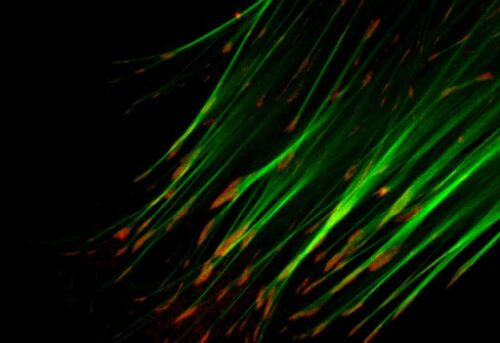Just like how we have to physically move to get to and from work, cells have to physically move to accomplish routine tasks. Researchers in the Nicoli Lab of Yale’s Department of Genetics recently observed an interesting connection between RNA, a crucial molecule for making proteins and regulating genes, and this cellular mobility phenomenon. Associate research scientist Liana Boraas noticed RNA localization to a cell’s focal adhesions (FAs), which are macromolecular protein complexes that act as the cell’s hands and feet.
FA complexes help cells hold on and travel to surrounding molecules and cells. RNA was found to interact with FA proteins using the protein G3BP1, forming a ribonucleoprotein, a complex of RNA and protein involved in RNA processing and regulation. The researchers studied endothelial and fibroblast cells, highly migratory cells that line body surfaces and help with tissue structure. They discovered that G3BP1 and RNA complexes at FAs can modulate the appendages, or “limbs,” of the cell, ultimately dictating cell migration and cell speed.
With this new discovery, Boraas is hopeful this finding can be applied in wound repair and cancer treatments by increasing or decreasing cell migration as needed. For example, scientists would want to accelerate cell migration in wound repair but inhibit the migration of cancer cells. With current work underway to engineer specific RNA fragments for specific cell types, the team is looking to use mouse models to test this wound repair theory. “I think that if we can understand [how to manipulate RNA], that’s the future of medicine,” Boraas said.

